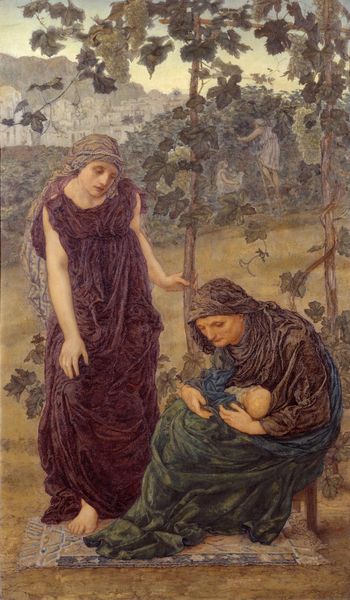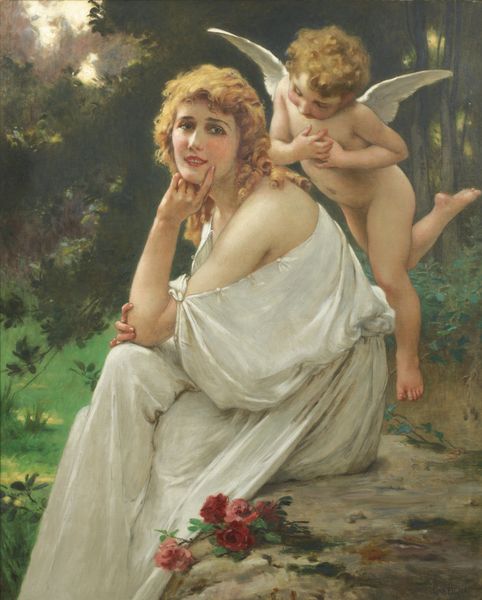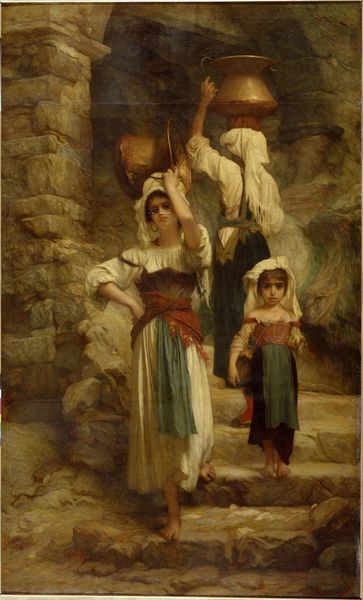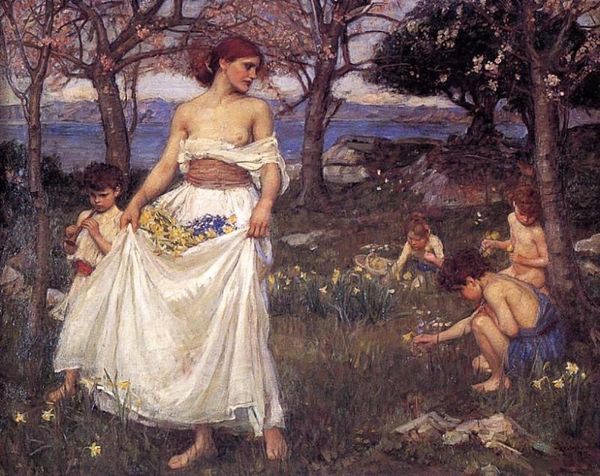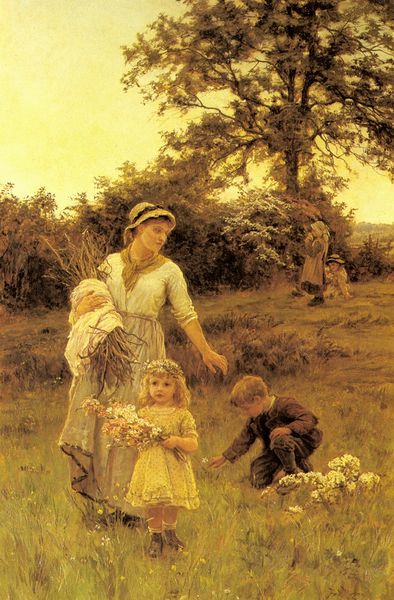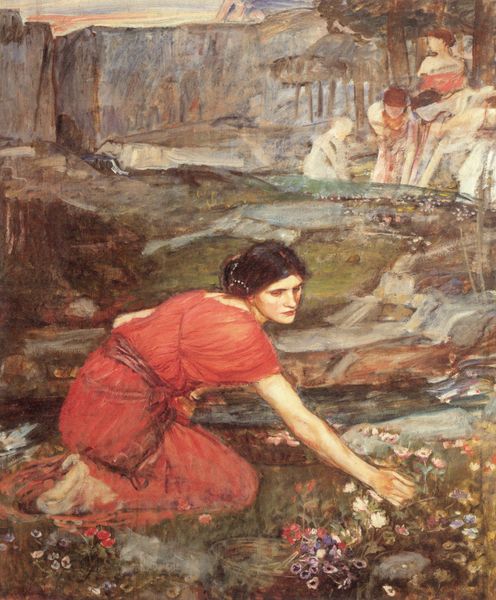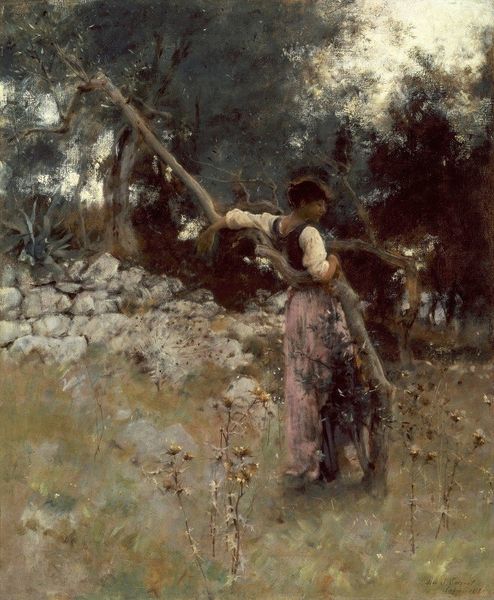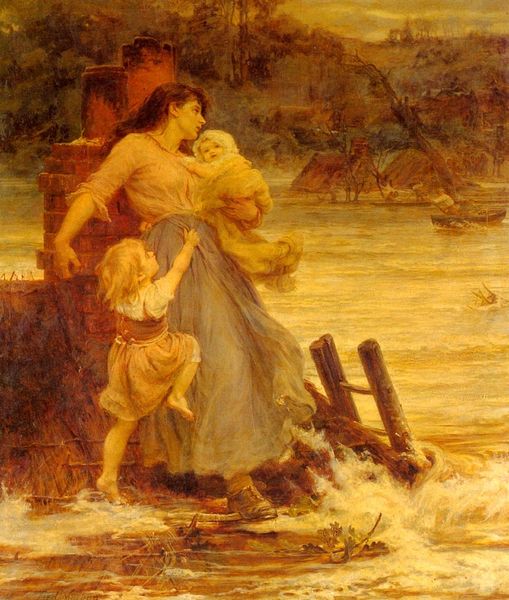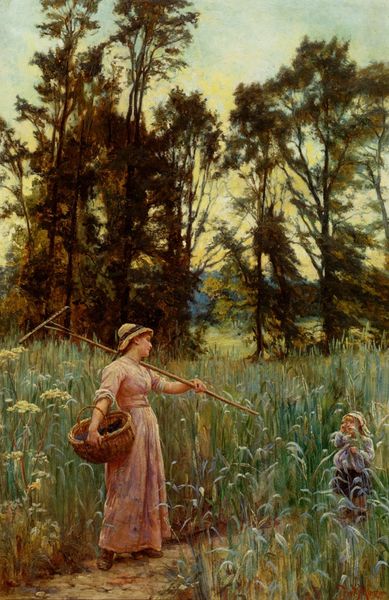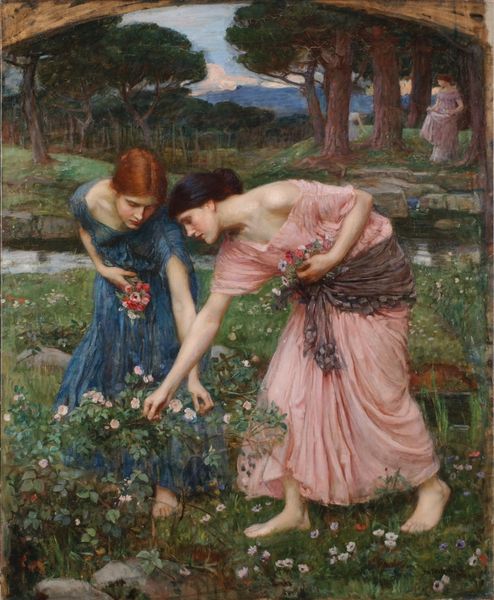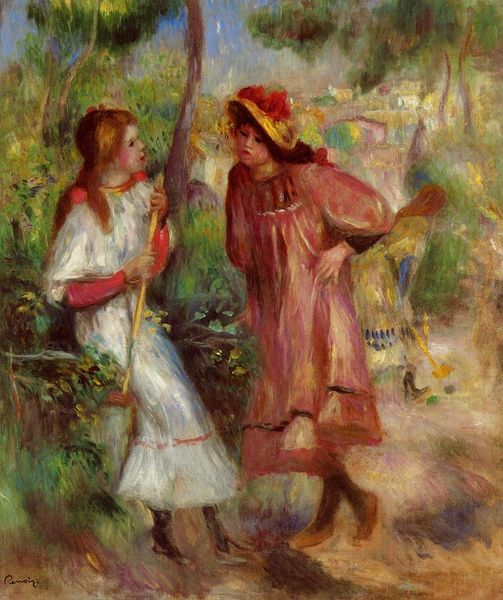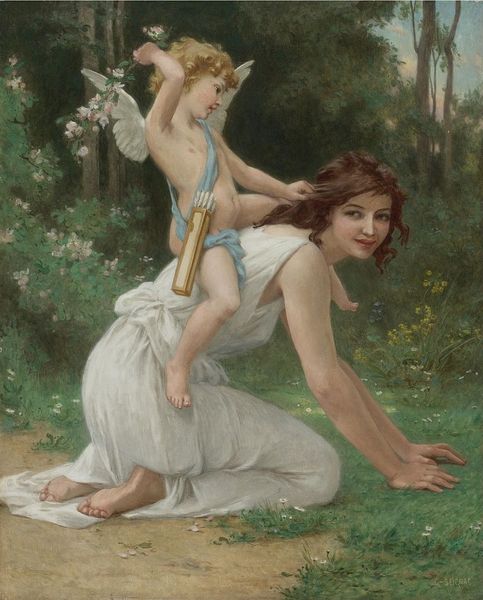
Copyright: Public domain
Editor: This is "Gathering Almond Blossoms" by John William Waterhouse, painted in 1916. The soft brushstrokes and light colours give it a really gentle, almost dreamlike quality. What strikes you most about this piece? Curator: Well, looking at Waterhouse in 1916, it’s hard not to see it through the lens of the First World War. While outwardly pastoral, the image exists within a culture grappling with profound loss and societal change. How might this idealized vision of femininity and nature function as a kind of visual escape? Editor: I guess the serenity is in stark contrast to the war, a real remove. Is it fair to assume that the war shaped even the paintings of artists seemingly removed from its direct horrors? Curator: Absolutely. The role of art and artists were being renegotiated during the rise of nationalistic sentiment. Works like this one could reinforce certain nationalistic views, portraying an idyllic domesticity worth fighting for, don't you think? How might this imagery contribute to or challenge the prevailing societal expectations of women during wartime? Editor: I never thought of it that way. So, what seems like a peaceful scene is really tangled up in the politics of its time, promoting traditional roles when those roles were radically shifting. Curator: Exactly. Even seemingly simple, beautiful paintings participated in the larger cultural dialogues of the time. Considering what it omits often says even more. Editor: Wow, I'll never look at pretty paintings the same way again! Thanks, that’s been incredibly insightful. Curator: My pleasure. It is through this analysis of power dynamics and historical context that art truly reveals its significance.
Comments
No comments
Be the first to comment and join the conversation on the ultimate creative platform.
